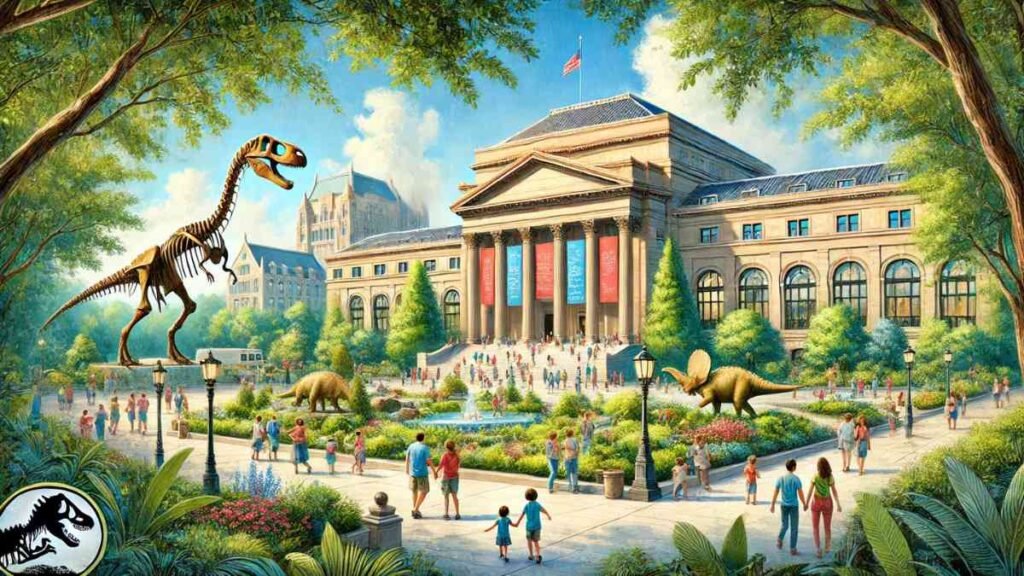Introduction
The Carnegie Museum of Natural History, located in Pittsburgh, Pennsylvania, is a treasure trove of natural wonders. This renowned museum combines education, research, and awe-inspiring exhibits to captivate visitors of all ages. Whether you’re an avid history buff or just curious about the marvels of nature, this museum offers something for everyone. In this article, we’ll explore its fascinating collections, unique features, and its role in inspiring generations to appreciate our natural world.
The Legacy of the Carnegie Museum of Natural History
Founded in 1896 by industrialist Andrew Carnegie, the Carnegie Museum of Natural History has grown to become one of the most celebrated museums in the United States. Its mission is to advance knowledge about the natural world while encouraging visitors to embrace responsibility for the environment.
The museum is home to over 22 million specimens, with around 10,000 displayed at any given time. This vast collection not only highlights the diversity of life on Earth but also tells the story of its evolution and interconnectedness.
Highlights of the Museum’s Exhibits
Dinosaurs in Their Time
The Dinosaurs in Their Time exhibit is undoubtedly the star attraction. Housing the world’s largest collection of Jurassic dinosaurs, this exhibit showcases original fossil skeletons of iconic species like Diplodocus carnegii (affectionately nicknamed “Dippy”). Visitors are transported millions of years back to when these colossal creatures roamed the Earth.
The display is carefully curated to mimic the prehistoric ecosystems, providing a contextual understanding of how these giants lived, hunted, and survived.
Hillman Hall of Minerals and Gems
For those enchanted by the beauty of Earth’s treasures, the Hillman Hall of Minerals and Gems is a must-visit. This hall houses over 1,300 mineral specimens, making it one of the finest mineral exhibitions in the country. From dazzling gemstones to rare geological formations, it is a testament to Earth’s hidden wonders.
Highlights include perfectly formed quartz crystals, vibrant tourmalines, and rare meteorites, each telling its own unique story.
Alcoa Foundation Hall of American Indians
The Alcoa Foundation Hall of American Indians delves deep into the rich and diverse cultures of Native American peoples. Through artifacts, dioramas, and interactive displays, visitors can learn about the traditions, histories, and contributions of indigenous communities across North America.
This exhibit fosters appreciation and understanding of Native American heritage while preserving their stories for future generations.
Educational and Research Opportunities
The museum isn’t just about exhibits; it’s also a hub for education and research. Programs for children and adults alike make learning about the natural world both engaging and accessible.
The museum’s Powdermill Nature Reserve, located nearby, serves as an environmental research center. It plays a critical role in studying ecosystems, bird migration, and climate change. Visitors to the reserve can participate in workshops, nature walks, and even hands-on scientific studies.
What Makes the Carnegie Museum Unique?
Several features make the Carnegie Museum of Natural History stand out:
- Authenticity of Specimens: The museum prides itself on displaying authentic artifacts and fossils, making every exhibit a genuine experience.
- Innovative Displays: Interactive and lifelike exhibits immerse visitors in different time periods and environments.
- Commitment to Conservation: The museum is dedicated to educating visitors about the importance of preserving Earth’s biodiversity.
- Diverse Collections: From ancient fossils to modern species, the variety of specimens showcases the breadth of Earth’s natural history.
Visiting the Carnegie Museum of Natural History
Location and Accessibility
The museum is located at 4400 Forbes Avenue, Pittsburgh, PA 15213, in the vibrant Oakland neighborhood. Its central location makes it easily accessible by car or public transportation.
Hours and Admission
The museum operates daily with varying hours, ensuring flexibility for visitors. Admission fees are reasonable, with discounts available for children, students, and seniors.
Special Events
Throughout the year, the museum hosts special events such as fossil digs, lecture series, and themed nights, offering unique experiences for attendees.
Tips for Visitors
- Plan Ahead: Allocate at least 3-4 hours to explore the museum fully.
- Family-Friendly: The museum offers child-friendly activities, making it an excellent destination for families.
- Guided Tours: Opt for a guided tour to gain deeper insights into the exhibits.
- Photography: Don’t forget your camera, but remember to check for any photography restrictions in specific areas.
Why Visit the Carnegie Museum of Natural History?
The Carnegie Museum of Natural History isn’t just a museum; it’s an experience that bridges the gap between past, present, and future. It inspires visitors to appreciate the complexities of life on Earth and the urgent need to protect our planet.
Whether you’re marveling at the towering dinosaurs, admiring glittering gems, or delving into Native American history, this museum offers an unforgettable journey.
Conclusion
The Carnegie Museum of Natural History stands as a beacon of education, discovery, and inspiration. With its world-class exhibits, dedication to conservation, and engaging educational programs, it promises a fulfilling experience for everyone who walks through its doors.
For More Visit, MirrorMagazine.co.uk


